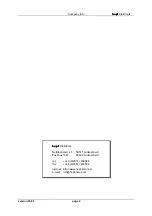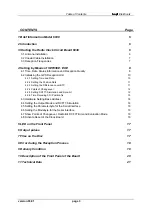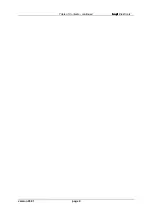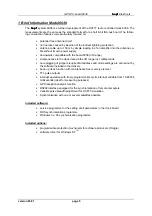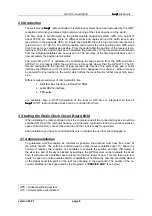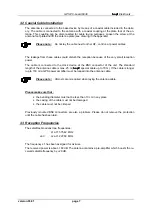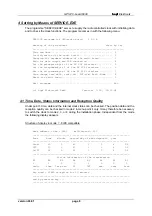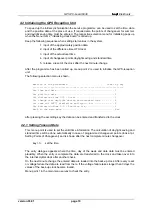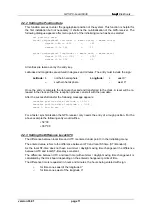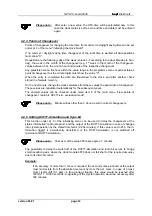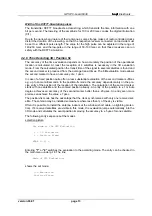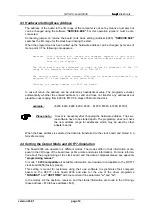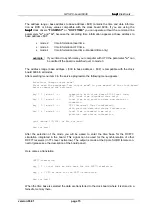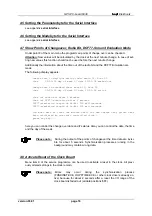
GPS PC-board 6038
hopf
hopf
Elektronik
version 03.01
page 12
Please note :
After enter a new value, the UTC-time will be calculated new. In this
case the clock status is set to zero and time and date must be entered
again.
4.2.4 Points of Changeover
Points of changeover for changing the local time from summer to daylight saving time can be set
under pt. 4 of the menu "initialising the clock board".
If no summer / daylight saving time changeover of the local time is wanted, all data positions
must show "0".
Requested are the following: day of the week (values 1-7 according to the days Monday to Sun-
day), the week in the month of the changeover (e.g. 1
st
week in the month of the changeover,
values between 1-5), the month, hour and minute of the respective changeover.
Any plausible time on the hour within the value range in the programme menu is permissible as
point of changeover but the minute digits must show the value "0".
When the entry is completed the data are transferred to the clock, and after another check
stored in a fail-safe memory.
On the next minute change the clock calculates from these values the exact date of changeover.
These values are calculated automatically for the subsequent years.
The entered values can be checked under menu item 8 of the main menu "view points of
changeover, radio bit, DCF77-sim, evaluation mode".
Please note :
Minute entries other than 0 do not result in correct changeovers.
4.2.5 Setting DCF77-Simulation and Sync-bit
This function under pt. 5 of the initialising menu can be used to delay the changeover of the
status information "radio reception" and the output of the DCF77-simulation in case of changes
into crystal operation by the stated time factor (2-254 minutes). If this value is set to 255, the in-
formation "radio" is permanently transferred or the DCF77-simulation is not switched off
(permanent DCF77-simulation).
Please note :
Take over of the value 255 takes approx. 3 minutes.
The possibility to delay the switch-off of the DCF77-simulation and radio bit serves to bridge
small reception gaps, where the clock module 6870 does not fall short of the required accuracy
due to its internal control.
Example:
If an accuracy of more than 1 msec is required, the second pulse produced at the output
must not deviate from the absolute time mark by more than ±1 msec. In case of a maxi-
mum crystal drift (0.1 ppm) in free-running situation, this value would be reached after
1000/0,1 = 10.000 seconds. A signalling of the crystal operation would be necessary after
166 minutes.


